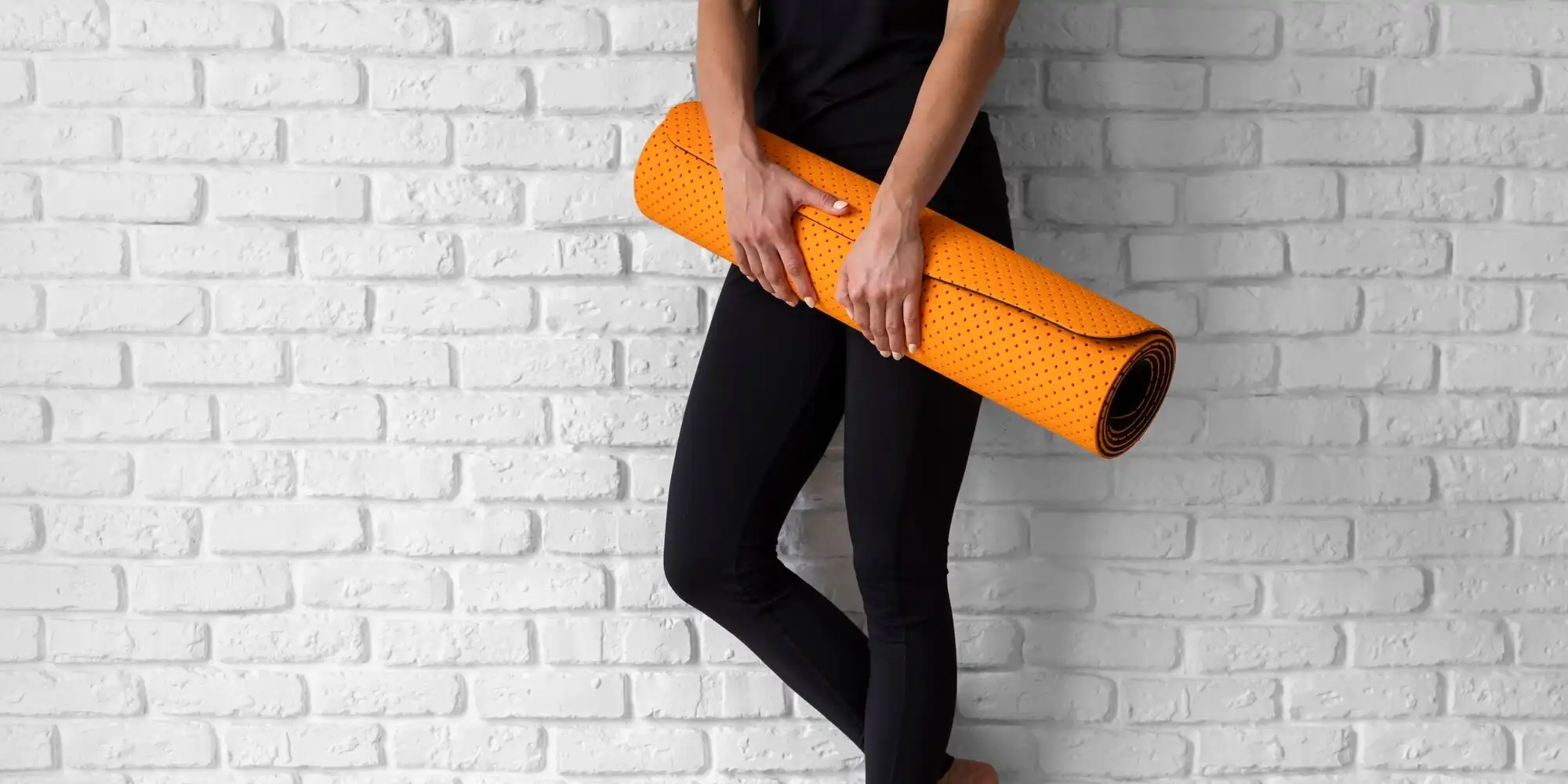In recent years, as our collective consciousness has turned towards sustainable living, the world of yoga has not been left behind. Yoga, a practice that encourages harmony and balance, has extended its ethos to the very foundation of our practice – the yoga mat. The shift towards eco-friendly yoga mats is not just a trend; it’s a conscious choice that aligns our well-being with the well-being of the planet.
Sustainable Materials for a Mindful Practice
The traditional yoga mats, often made from PVC (polyvinyl chloride), have long raised concerns about their environmental impact. PVC is not biodegradable and requires significant energy consumption in its production. The good news is that the industry has responded to these concerns by introducing a variety of sustainable alternatives.
Natural Rubber Mats
Yoga mats made from natural rubber are gaining popularity due to their eco-friendly nature. Harvested from rubber trees, the process is sustainable and does not involve harmful chemicals. Natural rubber mats are not only biodegradable but also provide excellent traction and durability, making them a favorite among eco-conscious yogis.
Organic Cotton Mats
For those seeking a more traditional touch, organic cotton mats are a great option. Grown without synthetic pesticides and fertilizers, organic cotton is a renewable resource. These mats offer a natural feel and are often free from harmful dyes and chemicals.
Jute and Cork Blends
Mats combining jute and cork are another innovative solution. Jute is a fast-growing, renewable plant, and cork is harvested from the bark of cork oak trees without causing harm to the trees themselves. The combination creates a mat that is not only eco-friendly but also provides a unique texture and excellent grip.
Mindful Manufacturing Processes
Choosing an eco-friendly yoga mat is not just about the materials; it’s also about how they are produced. Many sustainable mat manufacturers are adopting mindful manufacturing processes that prioritize energy efficiency and waste reduction.
Closed-Loop Systems
Some companies use closed-loop systems, where the production process minimizes waste by recycling and reusing materials. This not only reduces the environmental footprint but also promotes a circular economy.
Low-Impact Dyes
When it comes to the aesthetics of yoga mats, eco-friendly options often use low-impact dyes. These dyes require less water and energy in the coloring process, ensuring that the environmental impact is kept to a minimum.
Local Production
Choosing a yoga mat made closer to home can also contribute to sustainability. Local production means fewer carbon emissions during transportation, supporting both the environment and local economies.
Recyclability: Closing the Loop
The life cycle of an eco-friendly yoga mat doesn’t end when it reaches the end of its usability. Many sustainable mats are designed with recyclability in mind, ensuring that they don’t end up in landfills.
Biodegradable Options
Some mats are entirely biodegradable, breaking down naturally over time. This eliminates the worry of long-lasting environmental impact and aligns with the principles of yoga – impermanence and interconnectedness.
Take-Back Programs
Several companies have initiated take-back programs where old mats can be returned for recycling. This innovative approach ensures that materials are repurposed rather than discarded.
Aligning Your Practice with the Planet
As yogis, our practice extends beyond the mat and into the world around us. Choosing an eco-friendly yoga mat is a tangible way to integrate mindfulness into our daily lives. By opting for sustainable materials, supporting eco-conscious manufacturing processes, and embracing recyclability, we can nurture both our practice and the planet. Let your yoga journey be a mindful step towards a greener, more harmonious world.
FAQ
1. Are eco-friendly yoga mats as durable as traditional ones?
Yes, many eco-friendly yoga mats are designed to be durable and long-lasting, providing the same level of performance as traditional mats.
2. How do I dispose of my old eco-friendly yoga mat responsibly?
Check if the manufacturer offers a take-back program. If not, explore local recycling options or find creative ways to repurpose the mat.
3. Do natural rubber mats cause allergies?
Natural rubber is generally hypoallergenic, but individuals with latex allergies should opt for latex-free mats.
4. Are jute and cork mats suitable for hot yoga?
Yes, jute and cork mats offer excellent grip even in hot and sweaty conditions, making them ideal for hot yoga practices.
5. Can I use organic cotton mats for outdoor yoga?
Absolutely! Organic cotton mats are versatile and can be used both indoors and outdoors. Just make sure to keep them dry to maintain their integrity.
